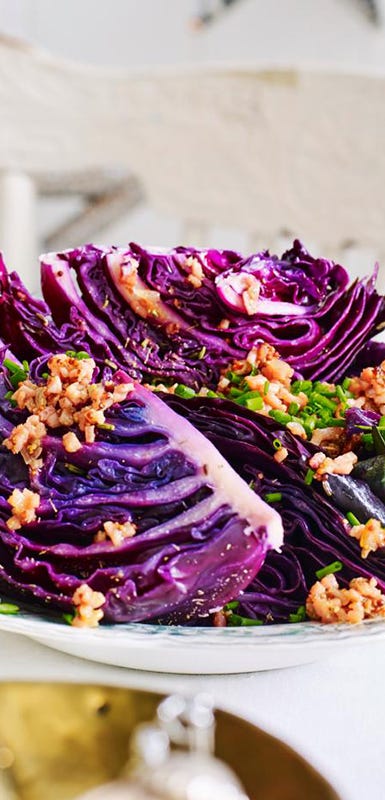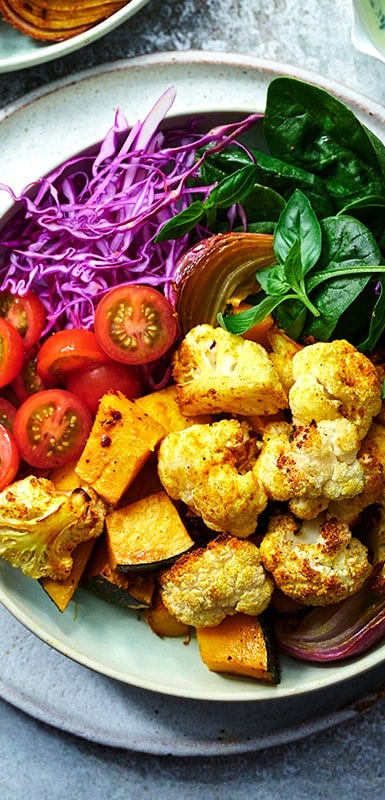Discover the benefits of eating a rainbow: How colourful foods enhance your health


Why eat a rainbow of fresh foods?
You may have heard that it’s important to add colour to your plate – but why is this?
If you’ve ever heard the term “eat a rainbow” before, it refers to incorporating fruits and vegetables with a variety of different colours into your daily eating plan. Plant-based foods contain different pigments known as phytonutrients, which are also sometimes referred to as phytochemicals. These are natural compounds found in plants, including fruits, vegetables, wholegrains, nuts, legumes, and seeds. Phytonutrients impart deep, rich colours to fruits and vegetables, and contribute to their taste and aroma. Think of vibrantly coloured berries, the bitterness of Brussels sprouts or fragrant garlic – phytonutrients are responsible for each of these characteristics.
Many phytonutrients have antioxidant properties that protect against free radicals; natural compounds that can damage the cells in your body and contribute to the process of ageing. The different colours of fruits and vegetables are linked to the presence of specific phytonutrients, each with different health benefits. Overall, many studies suggest that a diet rich in fruits and vegetables can support overall health with protective effects for the heart, eyes, brain and digestive system, and help with weight management efforts.
Let’s explore the different colours in foods and what those colours mean from a nutritional standpoint:
Health benefits of white foods
- Mushrooms
- Cauliflower
- Onion
- Garlic
White veggies contain nutrients including selenium, B vitamins and vitamin C. Garlic and onion contain sulphur compounds which may improve heart health, while mushrooms provide more vitamin B12 and D than many other plant foods.
Tip: Try adding cauliflower, mushrooms and garlic to stir-fries, and potatoes, swedes and turnips to tasty and satisfying winter casseroles.
Health benefits of orange and yellow foods
- Carrot
- Sweet potato
- Pumpkin
- Apricots
These sunny veggies and fruit boast nutrients including beta-carotene, vitamin C and A, potassium and carotenoids, which are antioxidants that have been linked to the prevention of certain cancers and heart disease. Carrots are the richest source of beta-carotene, a potent antioxidant that’s converted to vitamin A by the body and is also involved in boosting immune function.
Tip: Orange/yellow veggies such as carrot, sweet potato and pumpkin are delicious roasted and added to salads. Fruits of the same colour spectrum, such as apricots and mangoes, are great for snacks and for making healthy desserts.
Health benefits of red foods
- Strawberries
- Raspberries
- Chilli
- Tomatoes
Red produce contains nutrients including vitamin C and folate, as well as the powerful antioxidant, lycopene. Hailed for its ability to protect the prostate gland, the lycopene present in cooked tomatoes may also protect the skin from sunburn by helping it guard against harmful UV rays. Plus, Harvard researchers found women who ate two or more servings of strawberries a week were less likely to have elevated C-reactive protein levels, a blood biomarker that signals the presence of inflammation in the body.
Tip: Add red vegetables such as chilli, capsicum and tomatoes for a hearty pasta sauce, while red fruits such as strawberries and raspberries are a good cereal topping.
Health benefits of green foods
- Broccoli
- Spinach
- Avocado
- Kiwifruit
A natural pigment called chlorophyll is what brings the deep green colour to many vegetables. Compounds found in this colourful group of produce may include indoles, isothiocyanates, (including sulforaphane), and carotenoids. Green vegetables are also good sources of many vitamins and minerals.
Dark, leafy greens are important for heart health due to their presence of vitamin K, magnesium, potassium, and folate. Cruciferous vegetables, such as broccoli and cabbage, offer both antioxidant and anti-inflammatory properties. In particular, they are rich in sulforaphane, which has been shown to offer protective effects throughout the body.
Tip: Try sautéing spinach with garlic; add lightly steamed broccoli to salads, and spread avocado on a sandwich instead of butter. Include green fruits such as kiwifruit and honeydew melons in fruit salads.
Health benefits of purple and blue foods
- Purple cabbage
- Blueberries
- Eggplant
- Beetroot
- Spanish onions
Richly-coloured blue and purple fruits and vegetables are good sources of compounds that include anthocyanins, flavonoids, and flavanols. They provide antioxidant properties that are beneficial for heart health and healthy ageing, including memory and cognition. There is research to show that blueberries in particular, offer wide-ranging health benefits due to their high content of antioxidant compounds, and rich source of fibre, vitamins A and C, potassium, and folate.
Tip: Include purple cabbage and Spanish onions in a bright coleslaw, and chargrill eggplant or roast beetroot for nutritious side dishes. In summer, snack on fresh blueberries, and during autumn and winter, add the frozen variety to porridge.
Tips to help add more colour to your plate:
- Prioritise variety. Choose a variety of fruits and vegetables every day. No single fruit or vegetable is a “superfood” that can provide you with all the nutrients you need. The mix of antioxidants and nutrients you get from a variety of foods is best for overall health.
- Convenience is key. Buying pre-washed, pre-cut fresh or frozen produce can save you a lot of preparation time in the kitchen. You can easily toss baby carrots, leafy greens or frozen mixed vegetables into soups, salads, pastas and casseroles.
- Try new things. Make it fun to incorporate new vegetables and fruits into your eating plan by experimenting with new recipes. Even different cooking methods such as roasting, grilling or stir frying can completely change the taste and texture of a vegetable that you may not have previously enjoyed.
- Think with an addition mindset. Boost the nutrition of dishes you’re already preparing by adding sliced or chopped produce. For example, you can easily add tomatoes, capsicums and onions to salads, sandwiches and pastas. Blend a mix of chopped fruit into a delicious smoothie or top yoghurt, oats or wholegrain cereal with fresh or frozen berries.
























